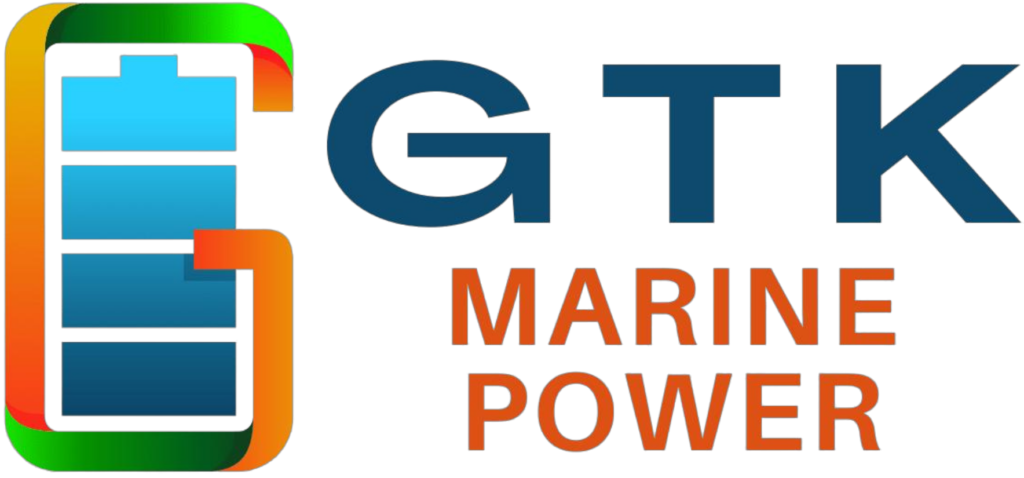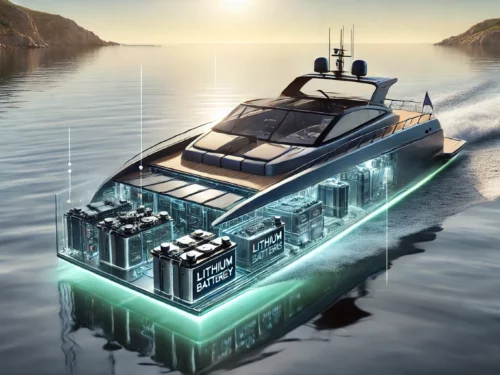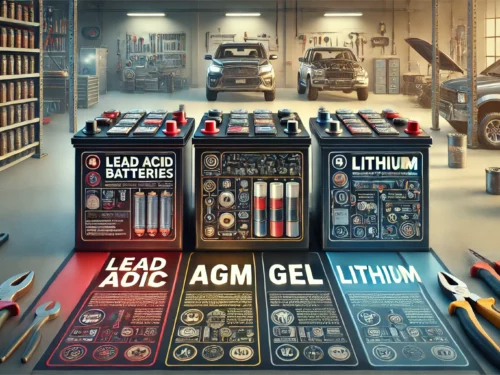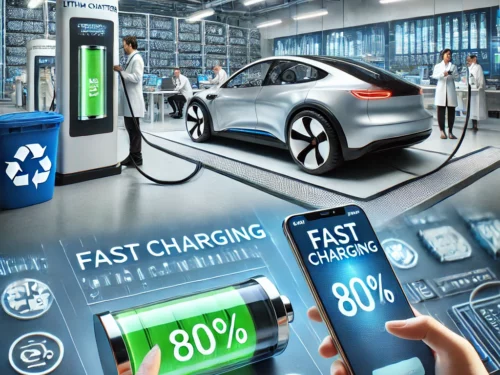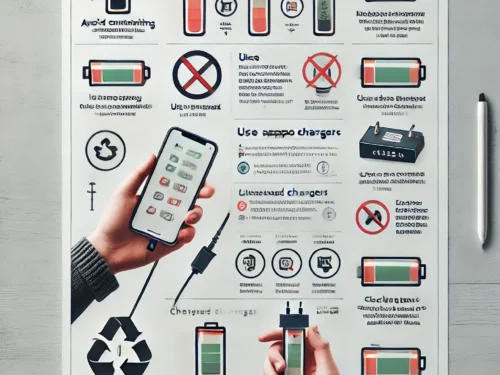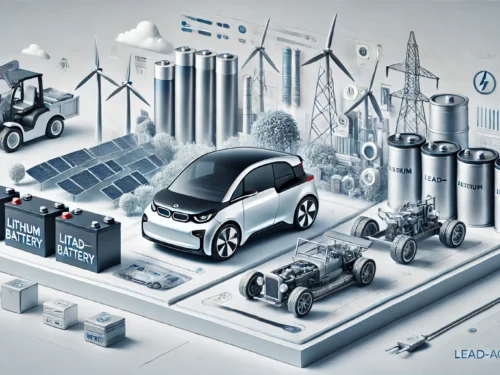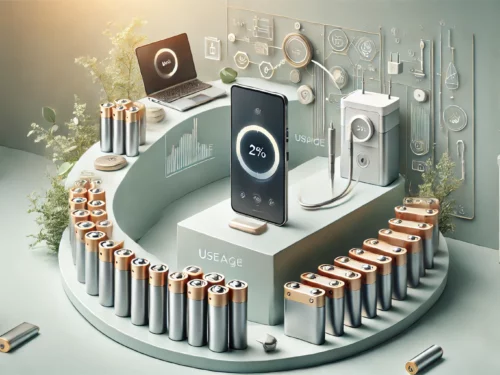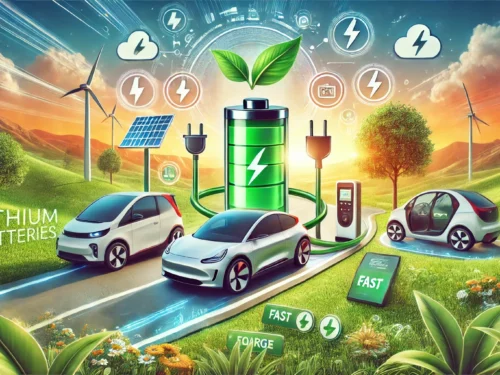t’s protected to say that battery innovation has developed essentially throughout the course of recent many years. The times of wooden encasements and glass cells are a distant memory, and because of new progressions and particular innovations, batteries are presently more productive, strong, minimized, and naturally more amicable than any time in recent memory.
One battery innovation that has figured out how to endure over the extreme long haul is lead-corrosive. The straightforwardness and unwavering quality of lead-corrosive batteries imply that they’re as yet a famous choice among purchasers searching for a financially savvy and durable energy stockpiling arrangement.
What’s more, in spite of the rise of new battery advances, like saltwater and lithium batteries — and expanding rivalry from power modules — the worldwide market for lead-corrosive batteries keeps on developing. As a matter of fact, industry specialists anticipate that the lead corrosive market should develop at a CAGR of 3.25% during the following four years and arrive at a total assets of more than $70 billion.
With regards to lead-corrosive batteries, two advances are mistaken for one another more frequently than some other — gel and Permeable Glass Matt (AGM). Indeed, even a portion of the main battery sites have their data stirred up as far as what every battery and it’s appropriate for. The facts really confirm that both gel and AGM batteries are ordered as fixed lead-corrosive batteries, and offer a large number of likenesses. In any case, they have unmistakably unique development plans for various purposes.
Throughout this blog entry, we’ll give a nitty gritty examination among AGM and gel lead-corrosive batteries to assist you with concluding which one would be most ideal for your specific necessities.
A Short Foundation
Both gel and AGM advances depend on the lead-corrosive idea that was found back in 1869. In such an extremely long time, the hidden innovation of lead-corrosive has basically continued as before — the electrolyte is acidic, and the plates are produced using lead.
At the point when they were first presented, lead-corrosive batteries changed the idea of energy stockpiling. These were the absolute first batteries with re-energizing ability. While lead was costly, the fundamental plan of lead-corrosive batteries was reasonable for large scale manufacturing. This figured out how to minimize the expenses for a level that was reasonable for some applications.
Utilizing meager plates implied that it very well may be utilized for applications that necessary solid, quick current floods (starter engines in vehicles), while a thicker plate made it ideal for profound cycle applications (fridges, power-lighting, and so on.).
As we’ve referenced over, the fundamental plan that was concocted north of 100 years and a half prior is still being used today. Nonetheless, it was not without its issues:
Assuming the battery case was broken or broken, the exceptionally destructive sulfuric corrosive could spill out.
The first lead-corrosive batteries couldn’t be introduced at a point, as this would expand the possibility releasing and diminish how much corrosive in touch with plates.
Since lead is a filter metal, the plates were helpless to clasping, which makes the plate contact and short out the whole unit or shed their dynamic material glue.
In high temperatures, the electrolyte would dissipate, which implied that the phones must be finished off occasionally.
ZERO-Support LEAD-Corrosive BATTERIES
The initial zero-support fixed lead-corrosive batteries were presented on a wide scale during the 1900s. These batteries were fixed, which halted the electrolyte spilling or dissipating. Be that as it may, these batteries didn’t determine different issues, for example, shorting out due to clasping lead plates, harm brought about by spills from a messed up or broke case, or abbreviated life and terrible showing when introduced at a point.
Permeable GLASS MAT (AGM) Innovation
First created during the 1970s, AGM batteries use glass strands woven into extremely fine a mat which is soaked in sulfuric corrosive and afterward positioned between the plates. This promptly settled different issues in the more seasoned plan, which is presently alluded to as overflowed lead-corrosive (FLA). Since these valve-controlled batteries were airtight, they could be sent with practically no unsafe material limitations. The plates can be made level to seem to be a standard FLA battery in a rectangular case, or they could be twisted in a round and hollow cell.
The innovation built up some momentum during the 1980s as a SLA battery for UPS and military vehicles and airplane to further develop dependability and lessen weight. Here are a portion of the striking benefits of AGM batteries:
In the event that the case breaks or breaks, the corrosive would stay in the mat and won’t spill out.
These batteries could be mounted at any point as the plan guaranteed that the plate would be in full contact with the electrolyte consistently.
The mat was basically a fundamental part of the batteries’ design, holding the lead plates set up and forestalling any clasping. Regardless of whether the plates clasp, the mat would keep them from coming into contact with one another.
The inward obstruction of AGM batteries is likewise extremely low, and that implies they have a similarly lengthy help life — in any event, when profoundly cycled — and are fit for conveying high flows on request. Besides, AGM batteries are zero-support, are impressively lighter than overflowed lead-corrosive batteries, and give great electrical unwavering quality. They can likewise sit longer away without requiring a charge, as they’re less vulnerable to sulfation. Moreover, the battery has a low self-release and can bear upping great to low temperatures.
The rundown of benefits doesn’t end here! AGM batteries likewise have a sublime capacity to profound cycle and an energize that is to multiple times quicker than their FLA partners. They perform splendidly in the profundity of release (DoD) division also. While overwhelmed lead-corrosive normally have a predetermined DoD of half, AGM batteries offer around 80%.
As a result of their generally lightweight and great vibration opposition, AGM batteries are usually utilized in vehicles and planes. Besides, their exceptional plan implies that the possibilities of corrosive spillage in the event of an impact or a mishap are moderately low. AGM batteries additionally offer great chilly climate execution, which makes them appropriate for marine, mechanical technology, and RV applications.
In any case, very much like any remaining sorts of batteries, AGM units have their disadvantages too. Their exhibition, right off the bat, experiences in hotter temperatures. As a matter of fact, numerous producers suggest halting the charge in the event that the center of the battery surpasses 49°C (120°F). AGM batteries are additionally delicate to cheating.
GEL Innovation
While AGM innovation has absolutely worked on the adaptability leading the pack corrosive fragment, it hasn’t disposed of the multitude of defects and issues. In applications with shaking or vibrations, the mat could wind up scouring against the plates, which can bring about harm.
While gel battery innovation was first imagined during the 1930s, it wasn’t culminated and marketed until the 1980s. Gel batteries utilize an electrolyte that is like a silicone gel in structures and appearance. The gel upgrades the battery’s primary trustworthiness inside and keeps the lead plates and their dynamic material ready. The gel ‘pastes’ on to the plates — basically joining the plates and the electrolytes into one single piece, so they move in synchronization assuming that the unit is shocked or vibrated.
Gel batteries offer a large number of benefits that make them reasonable for a wide number of utilizations. Right off the bat, very much like their AGM partners, gel batteries require no upkeep. Due to the electrolyte’s gooey, plasma-like nature, the opportunity of breaks is tiny — regardless of whether the external case is broken. This implies that gel batteries can be put at any point or position. Besides, these batteries include a valve which takes out unreasonable strain.
Gel batteries likewise have eminent shock and vibration-obstruction. There are no hydrogen outflows, and that implies you don’t need to stress over putting them in a ventilated region while they’re being charged. Likewise, since gel units have predominant profound cycling capacities, they likewise have a higher release include.
Moreover, dissimilar to FLA batteries, gel batteries can be handily restored even after they’ve been left released for a delayed timeframe.
Now that we’ve talked about the upsides of gel batteries, now is the ideal time to continue on toward their downsides — with the cost being the primary on the rundown. Contrasted with ordinary overwhelmed lead-corrosive batteries — and even AGM units — gel batteries have an extensively heavier sticker price. They likewise have a moderately sluggish charge rate. Also, their charging should be ended following it’s finished as it can foster voids with its electrolyte — which might possibly bring about loss of charging limit.
Something else gel batteries should be safeguarded from is heat. High temperatures can adversely affect the immersion and piece of the electrolyte.
Due to the various benefits they offer, gel batteries are reasonable for a wide cluster of utilizations. The most well-known ones incorporate sun powered energy capacity, ventilators in wellbeing offices, and maybe the most widely recognized one: electric vehicles.
GEL OR AGM: WHICH IS BETTER?
According to a hypothetical perspective, the response is basic: gel is the unrivaled of the two innovations. Notwithstanding, in the event that you take a gander at it according to a down to earth perspective, the sticker price of gel batteries is possibly legitimate assuming that the battery must be great at enduring jostling or vibration.
The utilization of gel batteries is very pervasive in the business of execution vehicles — going romping bicycles, fly skis, ATVs (Off-road Vehicles), quad bicycles, and so forth — regions where it are ordinary to container and weighty vibrations. For applications like these, picking gel batteries over AGM and FLA units is a reasonable choice.
Notwithstanding, with regards to most different applications, for example, crisis lighting, ordinary vehicles, crisis lighting frameworks, and sun powered energy capacity arrangements, AGM batteries are the better decision because of their lower costs.
WHY LEAD-Corrosive BATTERY Advances ARE Frequently Mistaken For One another
As we’ve expressed in the passages above, fixed lead-corrosive batteries (SLAs) come in two distinct varieties — gel and AGM. In any case, we’ve likewise utilized various terms to portray the two of them, including ‘zero-support’, ‘fixed lead-corrosive’, and ‘valve-managed’. This is likely the principal justification for why shoppers frequently confound the two advancements. Permit us to make sense of what these terms mean.
VALVE Directed LEAD-Corrosive BATTERIES
Despite the fact that AGM and gel batteries are classified as ‘fixed lead-corrosive batteries’, the truth of the matter is that they’re not really fixed. For example, in the event that the unit overheats in light of extreme charging, it could prompt a gas develop which could bring about the battery detonating. To keep this from occurring, both gel and AGM batteries have pressure valves that permit gases to get away from once the center of the battery arrives at a specific temperature.
Fixed LEAD-Corrosive (SLA)
Actually talking, even shut FLA batteries can be named as fixed lead-corrosive batteries. Yet, so, numerous shoppers hold the term ‘fixed lead-corrosive’ for gel or AGM batteries. Notwithstanding, don’t accept that this is generally evident. At the point when you buy a battery, consistently guarantee you comprehend what the vender or maker implies by SLA. You can do this by checking how the electrolyte (the sulfuric acid) is put away inside the battery:
As a fluid: this is a FLA battery which can’t be utilized in applications with unnecessary shaking or introduced at a point.
In a glass mat: this is an AGM battery and isn’t reasonable for applications that include weighty jostling or vibrations.
As a silicone gel: This is a gel battery that can essentially be utilized anyplace.
Last WORD
The better choice eventually relies on the customer’s prerequisites and the planned use. The accompanying things ought to be thought about while concluding which sort of battery to buy:
The application the battery
The climate where the battery will be set
How the battery will be re-energized
On the off chance that you require explosions of force or a sluggish release rate
When you answer the accompanying inquiries, you’ll have the option to figure out which kind of battery would be best for you.
